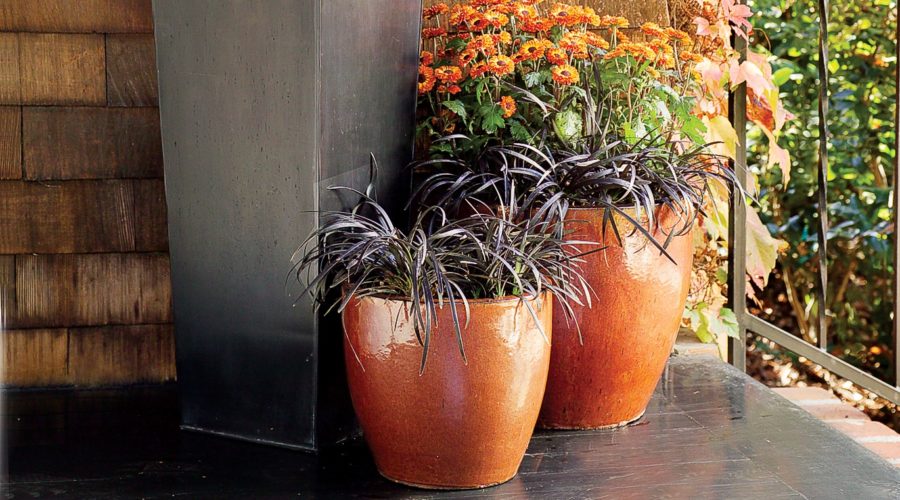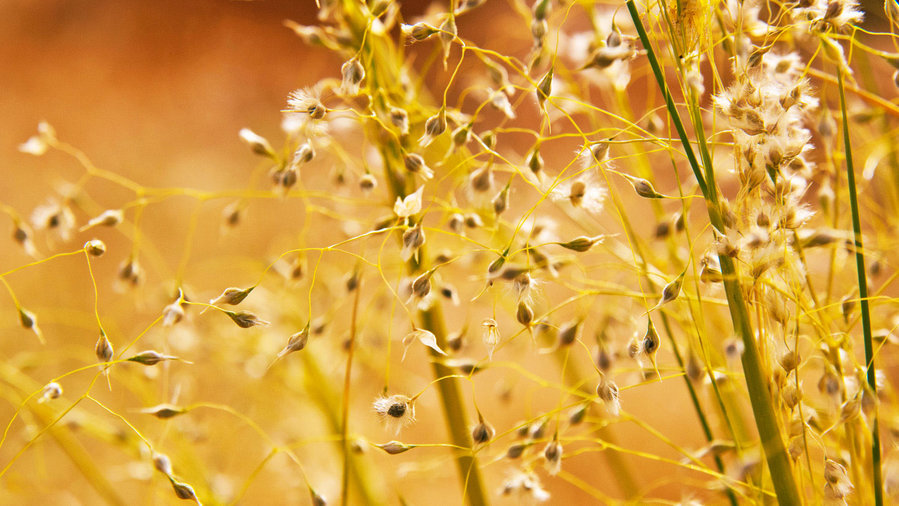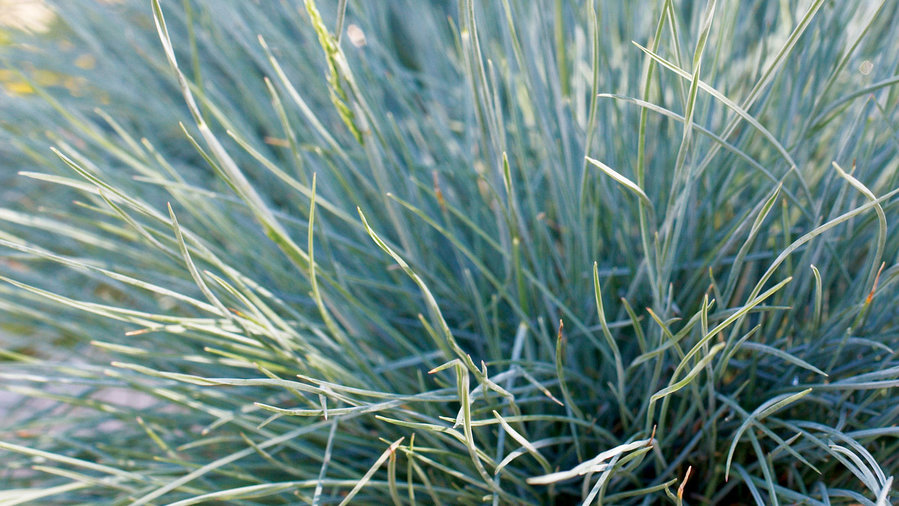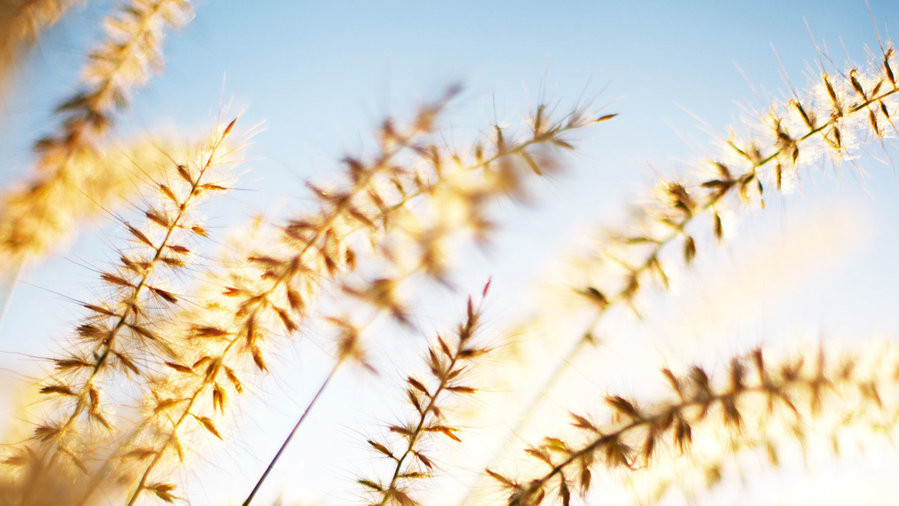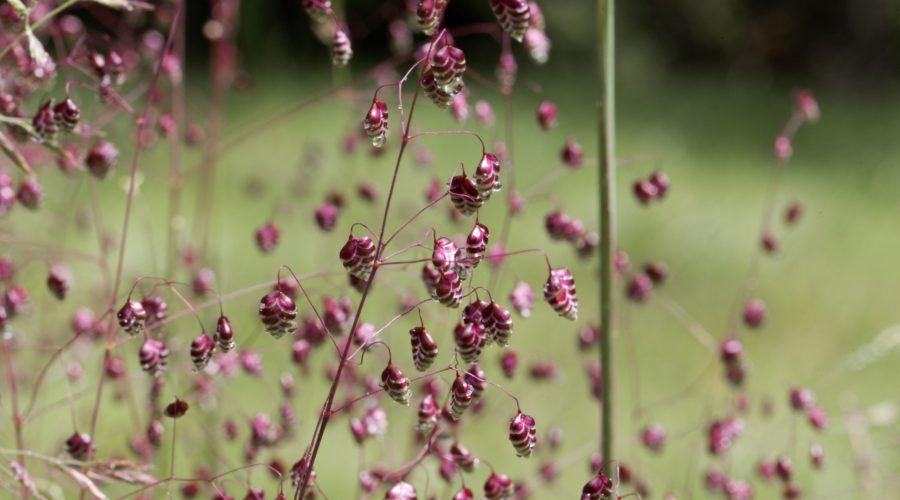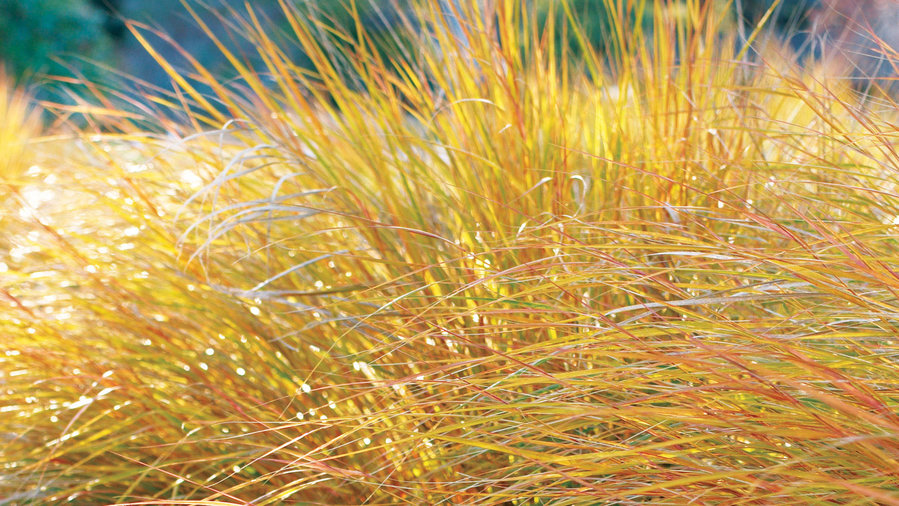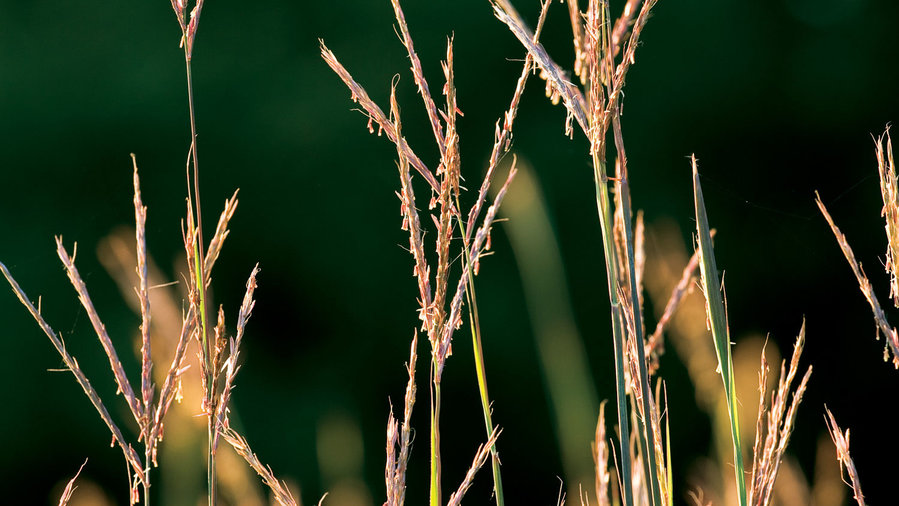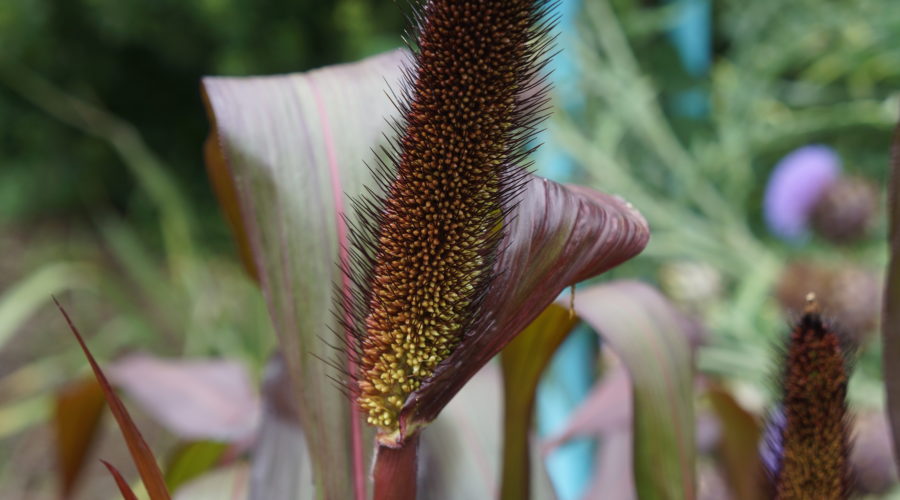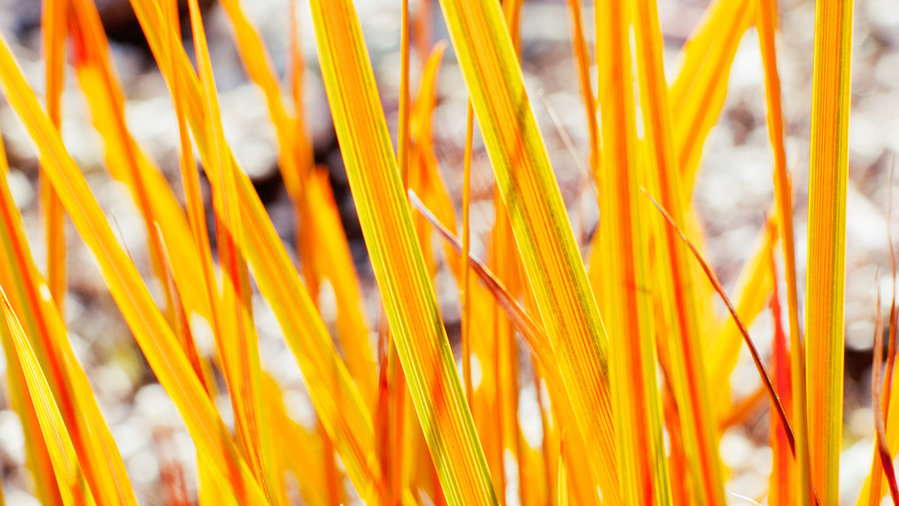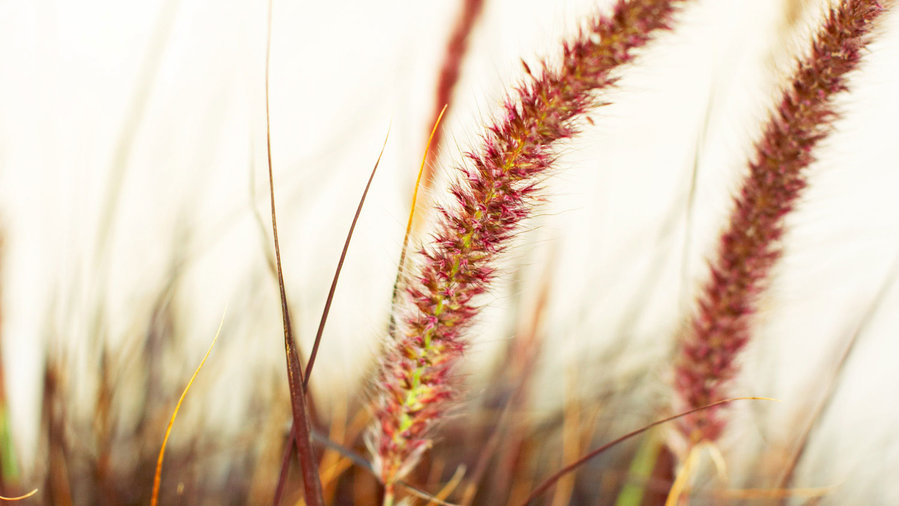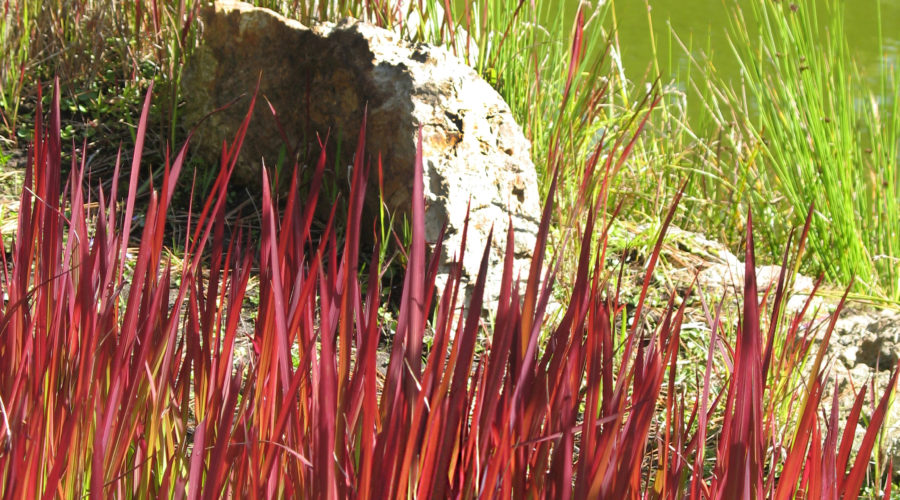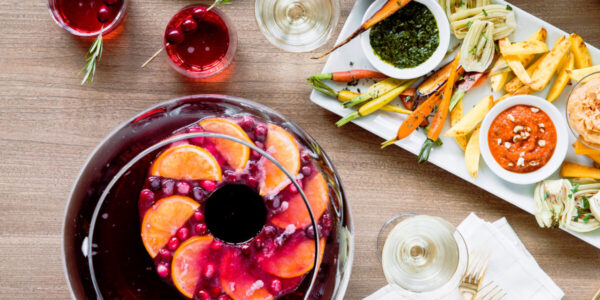Photo by Norm Plate
Black mondo grass (Ophiopogon planiscapus
This spooky black grasslike plant (it’s actually in the asparagus family, complete with tiny lilac-colored flowers) is undeniably perfect for Halloween. It looks right at home with autumn earth tones and performs well in containers. Being native to Japanese woodland slopes, it can handle a fair bit of shade.
Photo by Thom Gourley/Flatbread Images
Indian rice grass (Oryzopsis hym enoides)
This graceful wetland species is an ideal choice along pond or in wet containers. As the name implies, Native Americans did traditionally eat the seeds of this native species.
Photo by Linda Lamb Peters
Common blue fescue (Festuca glauca 'Elijah Blue')
Colorful, drought-resistant, and low-maintenance, his is one of our absolute favorite fall grasses. A modern mystery. This slate-blue beauty looks particularly striking when littered with red Japanese maple leaves.
Photo by Chris Leschinsky
Fountain grass (Pennisetum orientale)
Fountain grass is named for its gracefully arcing stems, but it could just as easily be called “kitty grass,” because its inflorescences are as soft as a kitten’s fur. These low-maintenance grasses need well-drained soils to survive winters, but can tolerate high heat and humidit.
Photo by weisschr / Getty Images
Common quaking grass (Briza media)
Fall grasses rarely make it into dried bouquets, but this one is an exception. Native to the West, quaking grass is an unexpected but outstanding addition to any wild-style meadow or cottage garden. Its spikes resemble rattlesnake rattles and tremble (quake) in breezes.
Photo by Linda Lamb Peters
Pheasant's-tail grass (Anemanthele lessoniana)
Coppery hues streak the slender leaves of this bushy grass. It looks gorgeous paired with fall-blooming spider mums in shades of peach and gold.
Photo by Planthaven
New Zealand flax 'Jubilee' (Phormium 'Jubilee')
Its leaves have cherry-hued margins like its ‘Jester’ parent, only much more vivid—striking in borders and containers. Grows 3 feet tall; colors up best in part shade.
Photo by Saxon Holt/Photobotanic
Big bluestem (Andropogon gerardii)
This Great Plains native prairie grass looks right at home in natural meadows; the variety ‘Pawnee’ has persistent foliage in warm fall colors, and the stems are a nice bluish color. It gets its other name, turkeyfoot, from the shape of its inflorescence.
Photo by John Winder / Flickr
Millet 'Purple Majesty' (Pennisetum glaucum 'Purple Majesty')
This is another of the standard fall grasses that make an appearance in garden centers before Halloween; it’s as substantial as a cornstalk, but with much prettier bronze-purple foliage. Birds (especially finches and chickadees) adore the seed heads.
Photo by Joshua McCullough
Deer grass (Muhlenbergia rigens)
This upright specimen looks like pampas grass, but is much less pushy. Use it as a foundation planting in rock gardens, with red-flowered Helianthemum and succulents to accent.
Photo by Thomas J. Story
Libertia (Libertia peregrinans)
Like Phormium, this is another New Zealand species that’s not a true grass at all (though it’s a monocot like grasses are, this one’s actually an iris). It sends up spikes of white blooms in the summer, followed by berries. This is an outstanding deer-resistant plant for the Oregon Coast.
Photo by Chris Leschinsky
Purple fountain grass (Pennisetum setaceum 'Rubrum')
The rich burgundy leaves on this tall specimen make it an outstanding choice for containers.
Photo by Tatiana Alex / Getty Images
Cogon grass 'Red Baron' (Imperata cylindrica 'Red Baron')
Though it’s considered an invasive weed in some wild areas, this beautiful grass tolerates saturated soils. The bright red foliage deepens to burgundy in fall, making it one of the boldest fall grasses against a backdrop of golden-flowered Rudbeckias.
